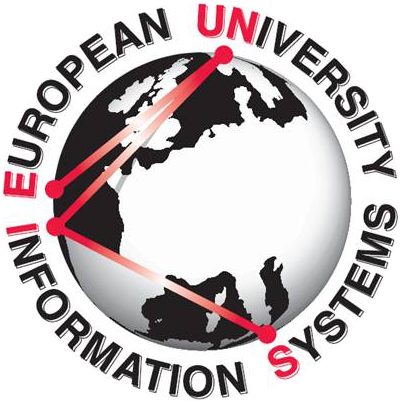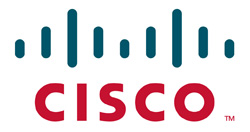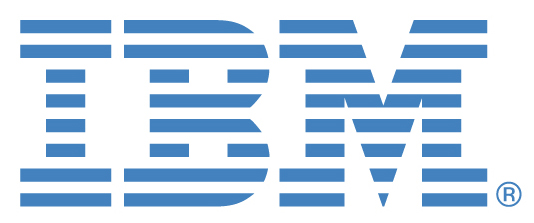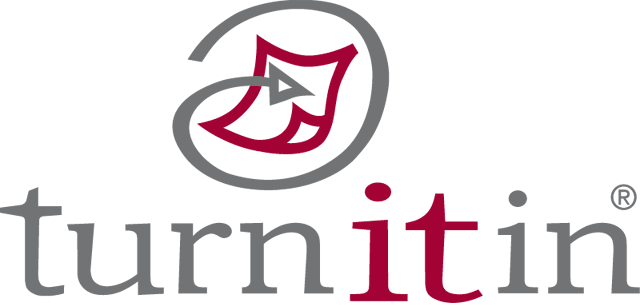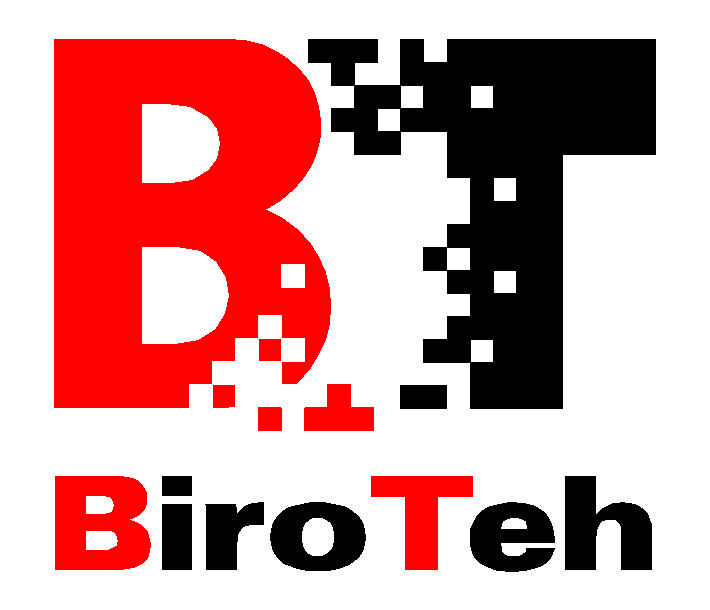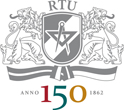Invited Speakers
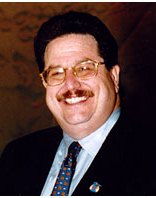 Richard Katz
Richard Katz
President at Richard N. Katz & Associates
Session title: MOOCs - Inflection Point for Higher Education?
Biography:
Richard N. Katz is the author and editor of seven books and more than 80 articles and monographs on a variety of management and technology topics. He is the founder of Richard N. Katz & Associates whose clients span all segments of US higher education as well as globally ranked universities in Australia, Canada, China, Singapore and Switzerland. Richard is also the Executive Vice President of Nuventive, LLC and has served on more than 25 higher education boards. He was the Vice President of EDUCAUSE for 14 years and established the EDUCAUSE Center for Applied Research. He also served the University of California (UC) for 14 years.
Abstract:
This year may be remembered as an inflection point – a time when changes in student preference, globalization, technology, pedagogy, and economics conspired to disrupt higher education. College and university leaders are witnessing the emergence of massive open, online courses (MOOCs) in what has been described as either and education tsunami, or as the most important experiment in higher education. Governing bodies grew restive this year, signaling their expectations of technologically-mediated change? In other signs of change, small universities are using technology to extend the footprint of their institutions. The questions facing today's leaders are basic ones: whither higher education? And what is the way forward?
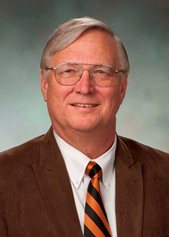 Voldemar A. Innus
Voldemar A. Innus
Owner and the principal of VAI Consulting, Pendleton, NY, USA
Session title: IT Leadership and Governance for Next Generation University
Biography:
Voldemar Innus was the Vice President and Chief Information for sixteen years at two campuses of the State University of New York; the University at Buffalo and Buffalo State. He is currently the owner and principal of VAI Consulting, Pendleton, NY, USA. Voldemar Innus has served as a senior administrative officer for over 40 years with extensive experience in budgeting, administrative operations, facilities planning, design and construction, as well as information technology and strategy. In these roles a major focus of his leadership was on the organizational development of these areas to ensure the delivery of the highest quality services to the enterprise. He has also been engaged by major research universities in the United States and Europe in consultancies in the area of information technology and strategy focusing on leadership, organizational design, organizational development and strategic planning.
Abstract:
Advances in Information Technology available to support the university mission continue at a rapid pace. What is the role of Information Technology in providing leadership in this quickly changing environment while at the same time employing information technology to support the evolving role of universities.
 Ian Dolphin
Ian Dolphin
Executive Director at Sakai Foundation
Session title: Innovation, incubation and the future of ICT in support of the academic mission
Biography:
Ian Dolphin is Executive Director of the Apereo Foundation, a new not-for-profit entity formed from the merger of the Sakai Foundation and Jasig. Apereo supports the development of innovative, open source software to support the academic mission and has over 120 academic and business partners worldwide with a strong presence in North America, South Africa, Japan and Europe.
Ian has previously worked for the University of Hull, in the United Kingdom, and for the Joint Information Systems Committee, part of the Higher Education Funding Council structure in the UK which oversees national ICT infrastructure, services and innovation activity. As the Head of eStrategy at the University of Hull, Ian was responsible for providing strategic advice on information and communications technology strategic direction and managing the Hull’s Digital University Project. Whilst at the university, Ian was appointed to the board of directors of both Jasig and Sakai – the first person from outside North America to sit on either body. At the JISC, Ian directed the e-Framework, an international partnership involving higher education agencies in Australia, New Zealand and the Netherlands.
Ian has a background in teaching but has been involved in the management and direction of ICT in education activities for over twenty-five years.
Abstract:
Whilst higher education institutions require effective administration, there is a clear imbalance between the IT resources committed to that purpose, and those dedicated to closely support the academic mission - learning, teaching and research. Against this backdrop, it makes a great deal of sense to coordinate the investment we make in those core mission-related areas.
A new organisation has been formed to help redress the balance. In December 2012 Sakai and Jasig merged, bringing together two organisations that have 23 years collective experience of creating and sustaining software to support the academic mission, together with the infrastructure pieces to support it. The new organisation resulting from the merger, Apereo, has been formed specifically to translate experiences from open source development into higher education, and use those experiences to inform the creation of software to support mission delivery.
Apereo has 120 organisational members around the world, including strong clusters in North America, Japan, South Africa and Spain. The new organisation works closely, and is co-developing an incubation process, with the seventy-strong ESUP consortium in France.
Ian Dolphin will explore the relationship between innovation, incubation, and sustainability; offer some reflections on existing Apereo software communities, and those the new organisation seeks to stimulate. Illustrations will be offered from Apereo institutions around the world.
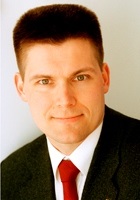 Jan-Martin Lowendahl
Jan-Martin Lowendahl
Research the Vice President at Gartner, Higher Education Strategies
Session title: The CIO and Finding the Future Technology Ecosystem Fit For Your Organization
Biography:
Jan-Martin Lowendahl, Ph.D., is a vice president in Gartner Research focusing on higher education governance, strategic planning, emerging trends and stakeholder communications. Prior to joining Gartner, he spent 15 years in higher education, including research and IT management. Before joining Gartner he served as CIO at Chalmers University of Technology where his main focus was on infrastructure strategies and governance. He has also worked collaboratively in the academic community and has served on a number of boards. Gartner is the world's leading information technology research and advisory company. Gartner deliver the technology-related insight necessary for IT-professionals (from CIOs and beyond) to make the right decisions every day.
Abstract:
Taking the vantage point of the CIO who is expected to navigate the tsunami of technology and deliver strategic capabilities, we take a dive into some Gartner tools to tame the information flow. We will use the Gartner Hype Cycle and Strategic Technology Map to literally connect the dots and find the eco-systems of technology capabilities that will deliver competitive advantage to your organization. Then we change gears and look at timing gauging tipping points of the technology eco-systems with Hype Cycle data as well as introduce the IT market clock as a tool to manage the whole life-cycle of the eco-system down to retirement.
Key Issues
How do you effectively optimize among all available technology options?
- What should be on the emerging technology shortlist for your organization?
- How do you design the most strategic combination of technologies for your organization?
- How do you manage you technology ecosystem life-cycle?
 Ricardo Ferreira
Ricardo Ferreira
Policy Officer at European Commission
Session title: Opening Up Education – The European Commission initiative towards more ICT and OER in Education and Training Systems in Europe
Biography:
RICARDO Carvalho Bruno FERREIRA, Portuguese, Degree in Economics by the Lisbon Technical University, Master of International Business by the Norges Handelshoyskole (Norwegian School of Economics), PhD in Applied Economics by the Universidad de Extremadura (ES).
Has been a professor at the Portalegre Polytechnic Institute (PT) for 15 years.
Now is the Policy Officer at the European Commission – Directorate-General for Education and Culture where is dealing with the policies for Opening Up Education (inclusion of more ICT and OER in Education and Training systems).
Abstract:
With Opening Up Education the European Commission aims at a stronger uptake of ICT in education, namely through a stronger usage of Open Educational Resources. In this session the initiative and how it can contribute to the Education and Training systems in Europe, will be addressed.
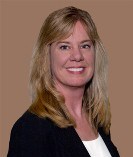 Jennifer L. Foutty
Jennifer L. Foutty
Executive Director at Kuali Foundation
Session title: Current status of Open Source and Kuali for administrative systems and the “Marketecture of Community”
Biography:
Jennifer Foutty is the Executive Director of the Kuali Foundation. Jennifer has worked over 25 years in higher education. She has broad experience in both functional and technical areas. She has worked in Finance, Contract & Grant Administration, Student Services, and in Information Technology. As Director of Information Systems at Indiana University, she led the university's PeopleSoft initiative for Student systems and Human Resources systems. Jennifer has also taught as an adjunct faculty member at IU's School of Public and Environmental Affairs, and has been a faculty member at the WACUBO Business Management Institute.
Abstract:
This Keynote Speech will focus on the status of the Kuali Community source initiatives and an overview of a concept introduced recently in an article about open source entitled “The Marketecture of Community”.
For the status, I will offer an update on the growth of the Kuali community in the United States and beyond. I will review each of the projects and where they are in software delivery and in adoptions. I will also review current technology directions and projects within Kuali to increase the overall user experience and brand. I will discuss some of the challenges we have faced as we evolve from doing only software development to also supporting a large community of implementations. I will talk about the successes and challenges of our Commercial Affiliates.
For the overview of the The Marketecture of Community”, I will present concepts introduced recently by James Hilton, Vice President, Chief Information Officer and a professor of psychology at the University of Virginia, and Brad Wheeler, Vice President for Information Technology and Chief Information Officer for Indiana University and a professor of information systems in IU’s Kelley School of Business. (The article is licensed under the Creative Commons Attribution 3.0 Unported License.) This important article clarifies some aspects of various communities and focuses on the differences between collaboration and cooperation. Drs. Hilton and Wheeler introduce the topic by stating “The term community, by definition, implies more than one participant. We often use it in very broad strokes when we refer to the higher ed community, the vendor community, the library community, the open source community, the Sakai Community, or others. But what really makes a community and what stickiness binds its participants together?” I will review in some detail how the Kuali community has come together and some basic structures that have created successful engagement and others that have produced challenges. I will compare this to the conceptual structures of “community” as outlined by Drs. Hilton and Wheeler.
Finally, I will discuss future directions of the Kuali community and relate that to other open source communities.
To wrap up the speech, I will talk about how this community source model is the next generation for leaders in universities to approach the design, development, delivery, and adoption of large enterprise systems in the future. The time for open source is here and now, not only for the Linuxes and Apaches, but also for enterprise level systems for higher education. The role of ICT in promoting and directing these strategic decisions on behalf of their universities, for strategic and economic value, is critical.
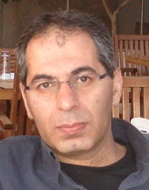 Eli Shmueli
Eli Shmueli
IUCC- Israeli Inter-University Computation Center, member of TERENA
Session title: The TERENA Open Educational Resource pilot
Biography:
Eli is the Director of IUCEL-MEITAL, an operating unit of Israel’s Israeli Inter-University Computation Center (IUCC). Eli has decades of experience in developing and implementing e-learning technologies in Israel’s universities and colleges and in industry. He is responsible for initiating the integration of pioneering technologies by creating opportunities for collaboration with international and national organizations promoting OER usage, such as GLOBE, MERLOT and OCW-C. He leads the MAOR project, a national repository of online learning object meta-data, and well known for his expertise in OER standards. He plays a vital role in achieving the national goals of this prestigious project by implementing this platform for locating online peer-reviewed educational resources, and making them available to educational institutes, public organizations, educators and the general public.
Abstract:
The high costs involved in the development of learning materials in their production and presentation in local institutional repositories lead many institutions to examine ways to improve the cost-effectiveness of these materials. The implementation of open international standards and the characterization of learning objects according to widely accepted criteria contribute to the process of developing and sharing learning objects, and to the creation of a common language between content developers in different institutions, thus improving the process of creation, search and retrieval of these objects. This enables objects to be exposed to and accessed by additional audiences to whom they were not available before.
The OER (Open Education Resource) movement has become prevalent and common around the world. Organizations and institutes that are part of this movement are more willing today to share, use and reuse Learning Objects. Prominent examples are GLOBE, OCWC, MIT OCW, MERLOT, Ariadne, and MAOR in Israel OER provide a strategic opportunity to improve the quality of education as well as facilitate policy dialogue, knowledge sharing and capacity building.
In Europe, hundreds of universities have developed digital learning materials that are ready to be shared with other institutions. Today, most of these learning materials are in use only within the higher education institutions that developed them. The experience have demonstrated that international and local collaboration between different institutions contribute to the verity of available learning recourses the institutions have, reducing development costs, and promoting other collaborations between the institutions.
This presentation will introduce the OER-Terena initiative for higher education institutions and NERNs around the world in general, and in Europe in particular. OER-Terena project aims to create a European-wide federated repository, specially focused on audiovisual learning objects.
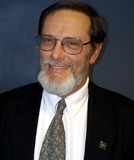 Greg Palmer
Greg Palmer
Executive Director at University of Pennsylvania, MAGPI (the Mid-Atlantic Gigapop in Philadelphia for Internet2)
Session title: Technological Tools for distance Collaborations
Biography:
Greg Palmer has been in the communications industry since 1980 working first as a technician for Inter-connect companies and then as full-time staff at Okidata, Inc. In 1988 he received a business degree in Operations Management from the LaSalle University, Evening Division. In 1990, he collaborated with the Okidata parent company, OKI Electric in Tokyo Japan, to build an international network that included Japan, Thailand, Australia, five sites in the United States and the United Kingdom. Following ten years of service with Okidata, Greg assumed the responsibilities of the Director of Campus Computing at Drexel University in Philadelphia. After returning to the corporate world, he took a position as the Director of Global Computing Operations at Christian Dalloz, Ltd, a French company that manufactured and distributed personal safety products. He then chose to return to the academic community at the University of Pennsylvania as the Executive Director of MAGPI, the regional aggregation point for Internet2.
Abstract:
There was a time when both researchers and educators were limited in their ability to collaborate through standard communications tools. Now, with the proliferation of National Research and Education Networks, new opportunities have been made available for real-time data analysis and sharing of educational content and resources. This presentation will take the audience through a brief history of the development of technology and infrastructure, and how it has affected Euro-U.S. communications today. It will also explore the pedagogical implications of how we use the existing technology and the new devices that are being developed.
Not since the invention of the Gutenberg printing press has there been so many opportunities for the collection and distribution of knowledge across national and geographic boundaries. After reviewing the growth of high performance infrastructure and the approaching ubiquity of advanced networking across the globe, I will cite examples of how more stable technologies like videoconferencing are finding new meaning in education, and the added value of mobility.
This presentation will show examples from projects involving the U.S. and European Communities in the fields of Physics, Archaeology, Sociology, and the Performing Arts. Students can visit the Large Hadron Collider in Cern and speak live with working physicists. Archaeologists in Greece will be showing their dig sites and simultaneously adding video and audio to their digital collection. Already in use is the new LOLA node which permits duets and master classes between performers and educators at distances up to 2,500 Kilometers.
These examples are representative of a growing number of initiatives occurring on a global scale. Future possibilities will also be explored with other nations and consortiums such as the UbuntuNet Alliance in Africa, the Caribbean Knowledge Learning Network, and the Beijng Genomics Institute. The conclusion will summarize what is being done today, and what can be done to enhance scientific and educational collaborations between the U.S. and Europe, and the world.

Greg Mathers
RTU Riga Business School Organizational Behaviour
Leadership, Business Communication Skills faculty,
accel Performance Consulting
Founder and President
Session title: Management Trends in Educational Institutions
Biography:
Greg Mathers is a serial entrepreneur working on his 5th start-up, Enixus, where he is a founding partner. Enixus is an accelerator helping early stage life sciences companies from the Baltics and Scandinavia more quickly develop into sustainable, growing enterprises. In addition, Greg teaches management in the MBA program at Riga Technical University, Riga Business School where he also served as academic director. He is an associate with the Adizes Institute, a top 10 leadership development institution. Greg regularly consults with leadership teams in organizations across Europe and in the US.
Abstract:
Over the last decades many market segments have experienced huge and disruptive changes – shifts that have ultimately been good for consumers but hard on traditional business models. We have seen massive transformations for products such as books, banking, newspapers, travel, and telecommunications. The higher education industry now seems to be on the verge of such a transformation. We have seen the beginnings of such change with the massive availability and enrollments in open online courses.
What does this mean for the traditional educational paradigm? Does this coming shift require a new management model and what should that model be? What should be the role of the CIO in this new higher education landscape?








